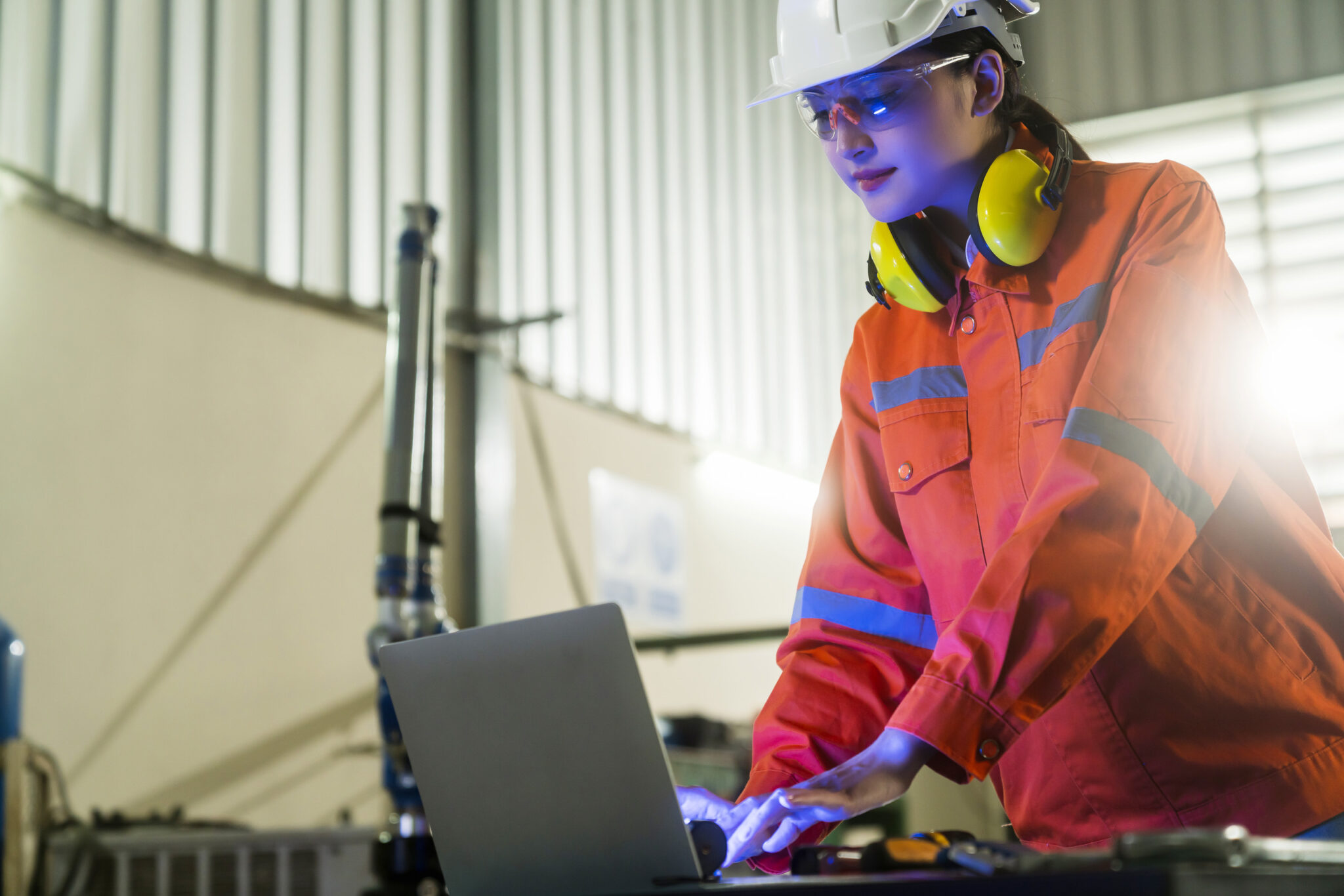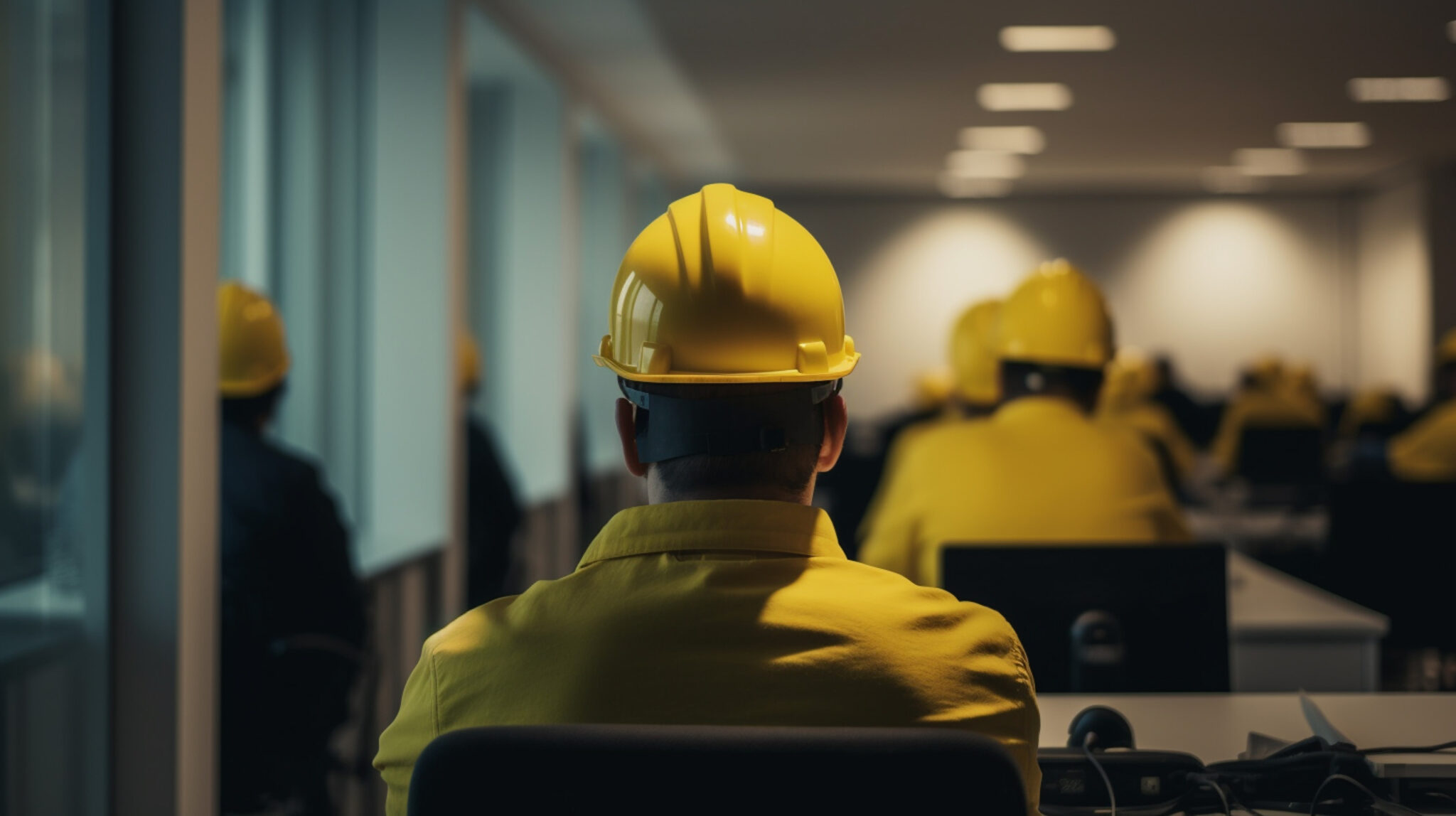The Impact of Integrating AI in Workplace Safety

See It In Action

Safety AI Software in Action
See how Visionify's Safety AI Software monitors workplace safety in real-time
Example Videos
Safety AI Software in Action
See how Visionify's Safety AI Software monitors workplace safety in real-time
Key Takeaways
- Proactive Prevention: AI transforms safety from reactive to proactive by identifying risks before incidents occur
- Enhanced Detection: AI systems detect hazards beyond human capabilities through continuous monitoring
- Real-Time Response: Immediate alerts and automated actions minimize incident impact
- Streamlined Compliance: Automated monitoring and reporting simplify regulatory adherence
- Ergonomic Improvements: AI analysis optimizes workplace design to prevent injuries
The Shift from Reactive to Proactive Safety
Traditional workplace safety approaches have long been reactive—addressing incidents after they occur through investigations, corrective actions, and updated procedures. This approach, while standard, leaves significant gaps in protection as it relies on learning from failures rather than preventing them.
AI is fundamentally transforming this paradigm by enabling truly proactive safety management. By continuously monitoring environments, analyzing patterns, and detecting anomalies in real-time, AI systems identify potential hazards before they result in incidents. This shift from reaction to prevention represents one of the most significant advancements in workplace safety in decades.
 AI systems continuously analyze workplace environments to detect potential hazards
AI systems continuously analyze workplace environments to detect potential hazards
Four Key Areas Where AI is Revolutionizing Workplace Safety
1. Hazard Detection Beyond Human Capabilities
AI systems excel at identifying potential dangers that human observation might miss:
- Continuous Monitoring: Unlike human supervisors who can only observe limited areas, AI systems provide 24/7 surveillance across entire facilities
- Pattern Recognition: AI detects subtle warning signs and developing hazards by analyzing visual data for anomalies
- Comprehensive Coverage: From PPE compliance to unsafe behaviors, AI simultaneously monitors multiple safety factors
These capabilities enable detection of specific hazards including:
- Spills and Leaks: Early identification of fluid releases from equipment or storage
- Smoke and Fire: Detection of smoke particles or heat signatures before conventional alarms activate
- Electrical Hazards: Monitoring of high-voltage areas for unauthorized access or missing safety equipment
- Ergonomic Risks: Identification of improper lifting techniques or repetitive strain situations
By catching these hazards early, AI systems prevent incidents rather than merely responding to them.
2. Enhanced Emergency Response Through Real-Time Alerts
When incidents do occur, AI dramatically improves response effectiveness:
- Instant Notifications: Alerts sent to appropriate personnel within seconds of hazard detection
- Automated Actions: Systems can trigger emergency protocols like evacuation signals or equipment shutdowns
- Precise Location Data: Responders receive exact information about incident location and nature
- Situation Updates: Continuous monitoring provides real-time updates as emergencies evolve
This rapid response capability significantly reduces incident severity by minimizing reaction time and ensuring appropriate measures are taken immediately.
 Safety personnel receiving training
Safety personnel receiving training
3. Streamlined Compliance and Reporting
AI transforms the often burdensome process of safety compliance:
- Automated Compliance Monitoring: Continuous tracking of adherence to safety regulations and protocols
- Digital Documentation: Automatic creation of compliance records with visual evidence
- Violation Prevention: Real-time alerts when non-compliance is detected, enabling immediate correction
- Simplified Reporting: Automated generation of compliance reports for regulatory submissions
- Trend Analysis: Identification of recurring compliance issues for systematic improvement
These capabilities not only reduce the administrative burden of compliance but also improve its effectiveness by ensuring consistent enforcement and documentation.
4. Ergonomic Improvements Through Movement Analysis
AI's ability to analyze human movement creates new opportunities for ergonomic optimization:
- Posture Monitoring: Detection of improper postures that could lead to musculoskeletal injuries
- Movement Pattern Analysis: Identification of repetitive motions that may cause strain over time
- Workstation Optimization: Data-driven insights for improving workplace design
- Personalized Recommendations: Tailored guidance for individual workers based on their specific movements
By addressing ergonomic factors proactively, AI helps prevent some of the most common workplace injuries—those related to repetitive strain, improper lifting, and poor posture.
Visionify's Approach: Comprehensive AI Safety Solutions
Visionify combines advanced Vision AI technology with user-friendly EHS software to create a complete safety management ecosystem:
Vision AI Technology
- Computer Vision Analysis: Advanced algorithms that interpret visual data from standard cameras
- Machine Learning Models: Systems that continuously improve hazard detection accuracy
- Real-Time Processing: Immediate analysis of video feeds for instant hazard identification
- Customizable Detection Parameters: Tailored monitoring based on specific workplace risks
EHS Management Platform
- Centralized Dashboard: Comprehensive view of safety status across facilities
- Automated Alerts: Instant notifications through multiple channels when issues are detected
- Analytics and Reporting: Data-driven insights into safety trends and compliance status
- Mobile Accessibility: Safety monitoring and management from anywhere via smartphone or tablet
This integrated approach ensures that hazards are not only detected but also properly managed through a systematic safety program.
The Broader Benefits of AI-Powered Safety
Beyond the direct safety improvements, organizations implementing AI safety systems experience several additional benefits:
Financial Advantages
- Reduced Incident Costs: Fewer accidents mean lower medical expenses, workers' compensation claims, and property damage
- Decreased Downtime: Preventing safety incidents minimizes operational disruptions
- Lower Insurance Premiums: Improved safety records often result in reduced insurance costs
- Compliance Fine Avoidance: Proactive compliance reduces the risk of regulatory penalties
Organizational Improvements
- Enhanced Productivity: Safer environments allow workers to focus on their tasks without safety concerns
- Improved Morale: Employees feel valued when organizations invest in their safety
- Strengthened Safety Culture: Technology reinforces the importance of safety throughout the organization
- Data-Driven Decision Making: Safety investments can be targeted to areas with the greatest impact
These broader benefits often make AI safety systems self-funding through their positive impact on the organization's bottom line.
Implementation Considerations
Organizations looking to implement AI safety solutions should consider several factors:
- Start with High-Risk Areas: Focus initial implementation on zones with the greatest safety concerns
- Integrate with Existing Systems: Ensure AI solutions complement current safety programs
- Involve Safety Personnel: Include safety professionals in system configuration and deployment
- Communicate with Workforce: Explain how AI enhances safety rather than simply monitoring employees
- Measure Results: Track safety metrics before and after implementation to quantify improvements
With thoughtful implementation, AI safety systems can be welcomed as valuable tools rather than perceived as intrusive surveillance.
Conclusion: The Future of Workplace Safety is AI-Powered
The integration of AI into workplace safety represents a fundamental shift from reactive to proactive safety management. By continuously monitoring environments, instantly detecting hazards, and enabling immediate responses, AI systems prevent incidents before they occur—creating safer workplaces and protecting employees from harm.
As these technologies continue to evolve, their capabilities will only expand, enabling even more sophisticated safety applications. Organizations that embrace AI-powered safety solutions today are not only protecting their workforce but also positioning themselves at the forefront of safety innovation.
The question is no longer whether AI has a place in workplace safety, but rather how quickly organizations can implement these life-saving technologies to create truly proactive safety cultures.
Ready to transform your safety program with AI? Contact Visionify today to learn how our Vision AI solutions and EHS software can create a proactive safety culture in your organization.
Frequently Asked Questions
Find answers to common questions about this topic
Want to learn more?
Discover how our Vision AI safety solutions can transform your workplace safety.
Schedule a DemoSchedule a Meeting
Book a personalized demo with our product specialists to see how our AI safety solutions can work for your business.
Choose a convenient time
Select from available slots in your timezone
30-minute consultation
Brief but comprehensive overview of our solutions
Meet our product experts
Get answers to your specific questions
Related Articles
Subscribe to our newsletter
Get the latest safety insights and updates delivered to your inbox.


